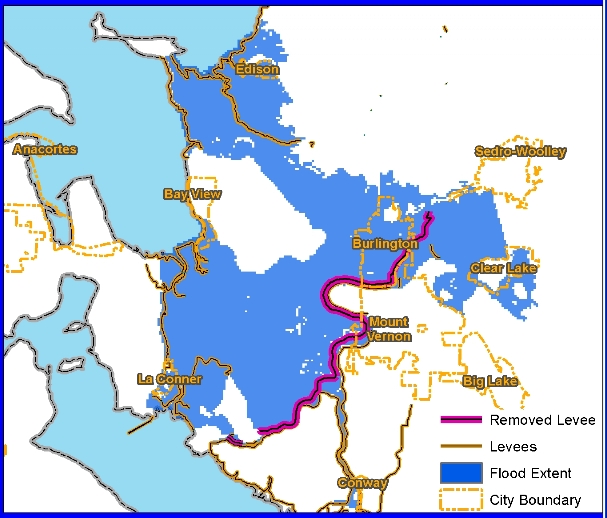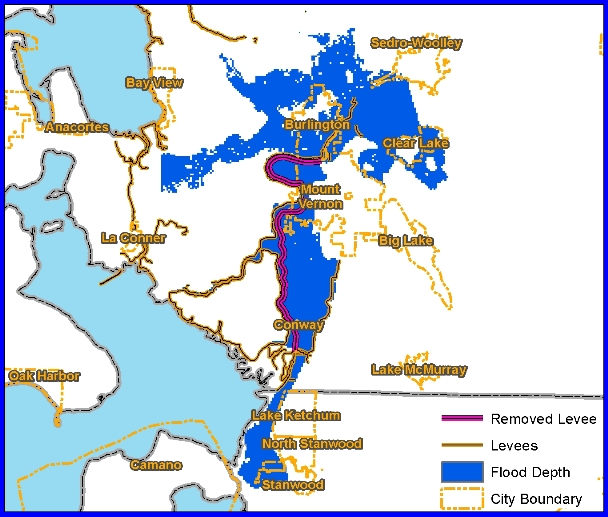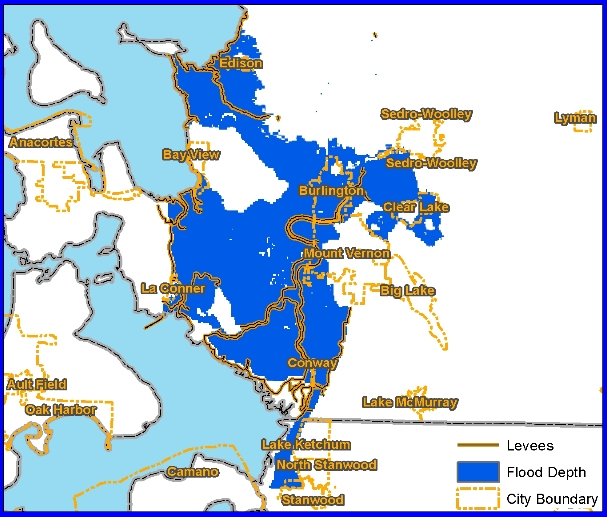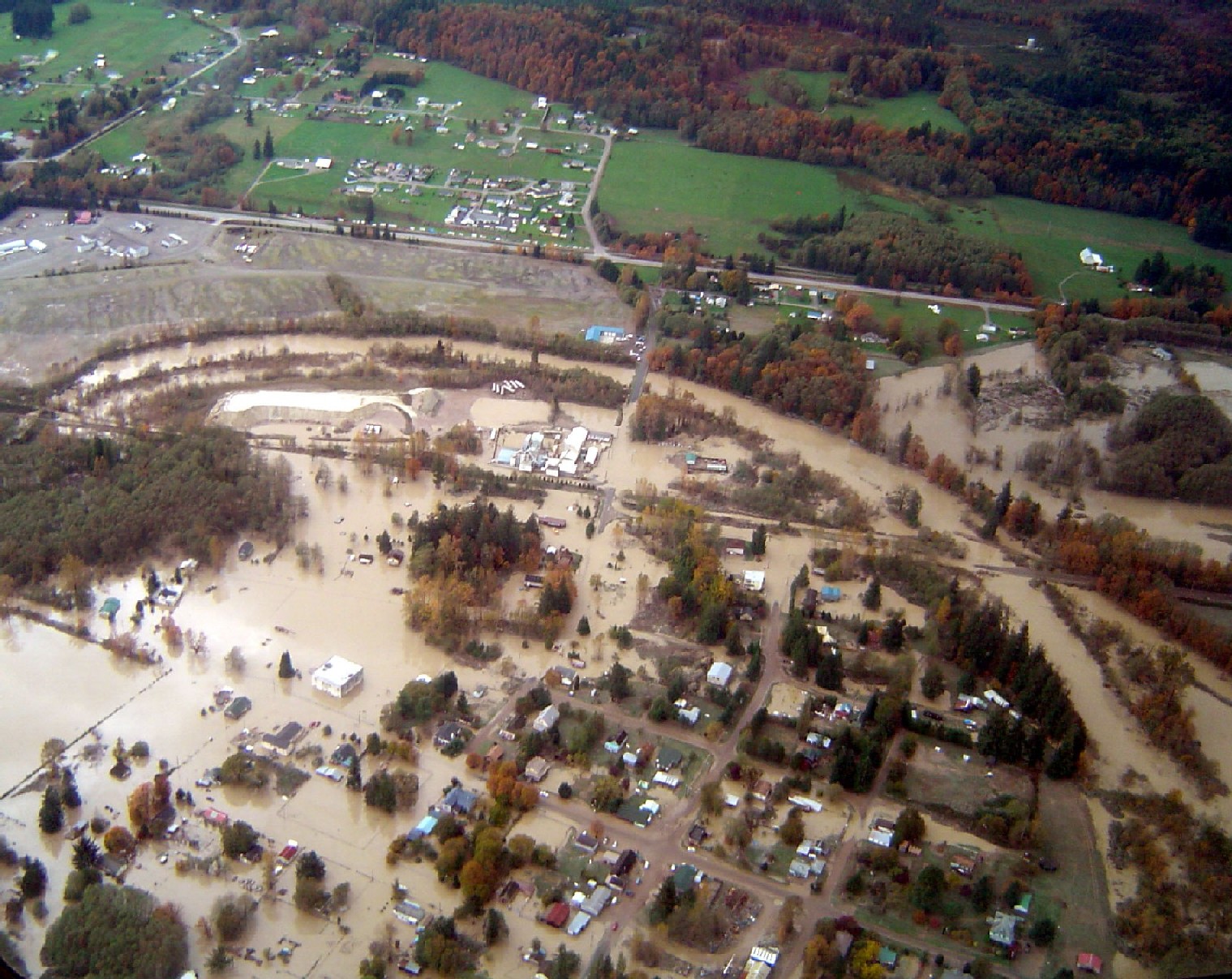Planning and Development Services
|
Background
|
|
|
City of Burlington Report The analysis for the City of Burlington includes the removal of the right bank levees on the mainstem of the Skagit River and the North Fork Skagit River; keeping all other levees intact. The map to the right shows the levee removed in pink and the flooded area in blue. The entire length of the levee is removed for this scenario. Analysis was done using 50 and 100 year flood scenarios. In addition. essential facilities were identified in the City of Burlington which could be affected from flooding . |
 |
|
City of Mount Vernon Report The analysis for the City of Mount Vernon includes the removal of the left bank levees on the mainstem of the south fork of the Skagit River, keeping all other levees intact. The map to the right shows the levee removed in pink and the flooded area in blue. The entire length of the levee is removed for this scenario. Analysis was done using 50 and 100 year flood scenarios. In addition, essential facilities were identified in the City of Mount Vernon which could be affected from flooding.
|
 |
|
Skagit Valley Report This analysis is for the entire Skagit Valley and includes a combination of seven levee removal scenarios. This scenario accounts for the removal of all the levees, shown in orange in the map to the right. This scenario is used for developing the 100 Year floodplain and represents many different flooding scenarios. Analysis was done using 50 and 100 year flood scenarios.
|
 |
|
Additional Information For more information please contact Kelly Durst FEMA region X
|
 2003 Flooding: City of Burlington |




















